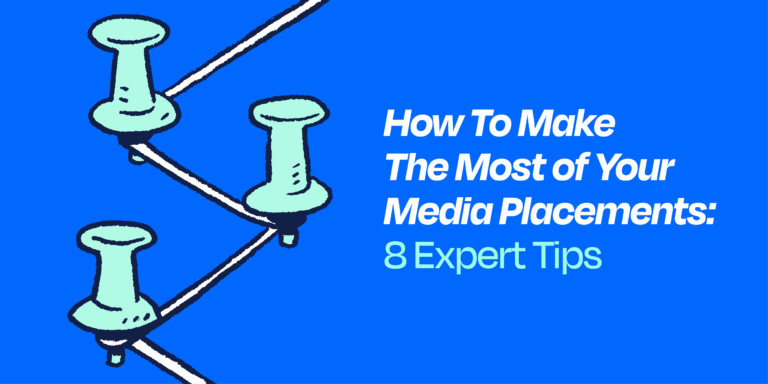Native advertising — or ads designed to mimic the look and feel of editorial content — is an important practice for publishers trying to engage today’s savvy, ad-blocking web users. Poynter suggests that though estimates vary, “spending on native ads has passed revenue from other forms of digital display in 2017 and that the gap will widen quickly in the years ahead.”
As native advertising continues to evolve, the Federal Trade Commission (FTC) is concerned that consumers may not be able to differentiate advertising from other content.
[Read more: Learn how to create native advertising content that performs!]
What are the FTC Native Ad Guidelines?
The FTC is a “bipartisan federal agency with a unique dual mission to protect consumers and promote competition. The FTC protects consumers by stopping unfair, deceptive or fraudulent practices in the marketplace.”
When it comes to native advertising, the FTC wants brands to be transparent with consumers by clearly disclosing their content as an advertisement. In 2015, the FTC published Native Advertising: A Guide for Businesses. These guidelines provide clear recommendations and examples of what is and is not acceptable in terms of digital native advertising.
The general consensus among marketing and PR pros is that the guidelines simply reinforce the same principles they have been following all along: As long as sponsored content is compelling, entertaining and tells a valuable story to your audience, it will comply with FTC guidelines. However, you can avoid crossing over into deceptive territory by clearly labeling that your content is an ad.
How to label native ads and comply with guidelines
As always, your goal as a marketer is to be as transparent as possible. Because a native ad is meant to look and read like the editorial content around it, consumers may not know it is an ad. Disclosures on native ads should be easily identifiable to alert consumers that they are reading paid content.
Disclosure tips and considerations:
- The disclosure should appear as close as possible to the native ads to which they relate.
- Communicate in clear, unambiguous language. The FTC recommends terms such as “Advertisement,” “Paid Advertisement,” “Ad” or “Sponsored Advertising Content” rather than “Promoted” or “Presented By,” which can be misleading.
- Utilize conspicuous visual cues to distinguish sponsored content, such as easy-to-read fonts, colors and shading.
- For shared or linked ads, the disclosures must travel with the ad content.
- Native ad content has the opportunity to appear in organic search results long after it’s published. To maintain compliance, include a disclosure in the URL (example.com/advertisement/), in the title at the beginning, in the meta description and in structured data on the page.
- In multimedia ads (such as video), disclosures should be delivered to consumers before they see or hear the related message to avoid deceptive “door openers” that entice users to click on ad content. Disclosures should be visible on all devices and platforms consumers may use when encountering the ad.
At Brandpoint, we take complying with FTC regulations and protecting our clients seriously. We distribute various types of Guaranteed Media Placements including MAT releases, infographics, slideshows and videos that are all considered a form of native advertising. As such, we take the following precautions when distributing this content:
- Disclosure: When paying for placement, we work closely with our publishers to ensure prominent disclosures are featured, following the above guidelines.
- Deceptive or outrageous claims: We also reserve the right to push back or not publish client-provided content we feel is deceptive in nature or makes outrageous claims. As it relates to Earned Media, Brandpoint still adheres to rejecting client content that is deceptive or outrageous in nature. However, we are not under a burden to label Earned Media as sponsored or advertising, since an editor has chosen to run the content based on its merit, and did not receive financial consideration for running it.
The FTC’s “Screening Advertisements: A Guide for the Media” may be an oldie, but it’s still a goodie. It helps the media identify deceptive ads, but it can help advertisers avoid creating deceptive ads, too. In the guide, the FTC also lists “buzz words” usually associated with fraudulent ads. Not only will avoiding these words save you from getting into trouble with the FTC, but your ads may appear more favorable to consumers.
Penalties for not following the FTC’s guidelines
So far, no penalties for violating the guidelines have been released, but since the debut of the native ad guidelines, the FTC has cracked down on a few brands. One of the most high-profile cases comes from Warner Bros. They worked with video game YouTube celeb PewDiePie and other influencers to promote a new video game.
In 2016, the FTC called out Warner Bros. for not requiring influencers to disclose their partnership sooner in the copy of the video. Some influencers did not include this disclosure until later in the copy and it could not be seen unless viewers clicked the “show more” button. Also, the influencers’ language was vague — they said they had “early access” or “partnered with” Warner Bros. Instead, the FTC wants to see words like “paid” or “advertising” to disclose the partnership.
The very first case that the FTC explored was also an influencer campaign. The retailer Lord & Taylor did not require the influencers they worked with to disclose that they were paid to wear one of Lord & Taylor’s dresses in their Instagram posts.
In both cases, the brands — not the influencers — were at fault. This acted as a wake-up call from the FTC to other brands and influencers that disclosures are mandatory in native ads.
Perhaps if the FTC releases an update (which would be the first one in over two years), it will cover more information about disclosures on influencer posts. In the meantime, this blog does a great job of explaining how to properly label your influencer posts, with information taken from an FTC Twitter chat.
Always aim for transparency
If you build explicit disclosures into your content from the beginning, you’ll avoid any potential for breaking the FTC’s guidelines. They clearly convey their stance that everyone participating “directly or indirectly in creating or presenting native ads” is responsible for ensuring transparency — so be sure to ask how the content will appear on-site when placing an ad with a third-party publisher.
If FTC guidelines make you nervous, Brandpoint will work with you and third-party publishers to ensure FTC compliance. We can also create the native ad content, set up the campaign and optimize it for top performance. Learn more about our native ad solutions.
Editors Note: This post was originally published in January, 2016. It has been updated for comprehensiveness and clarity.






